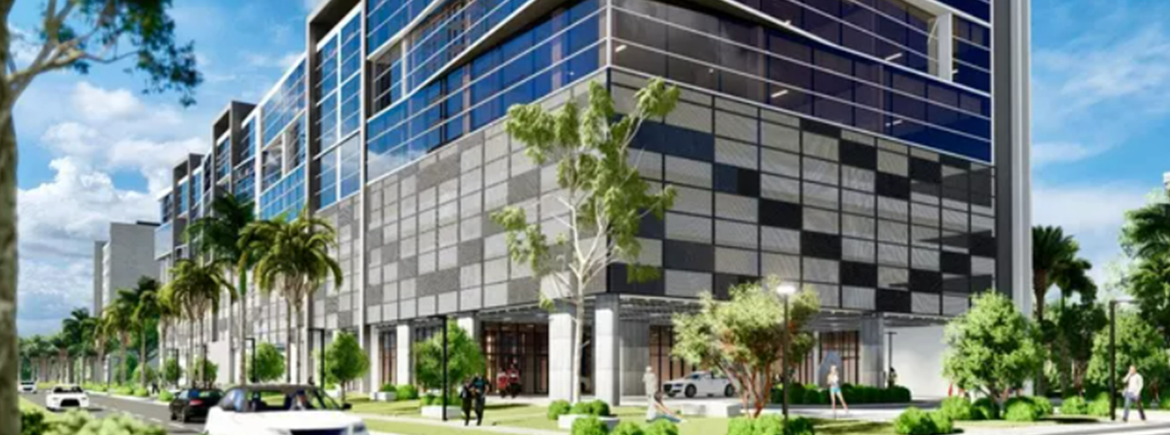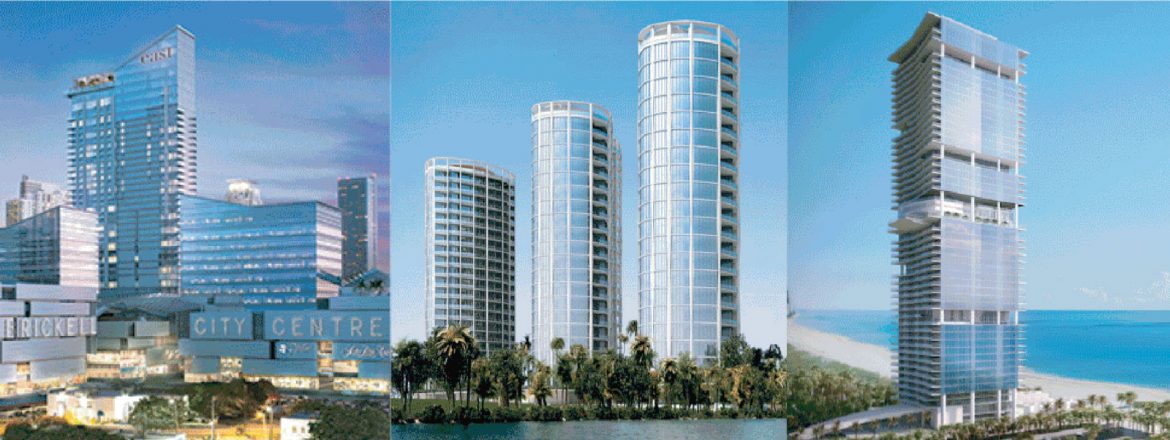
A 142K SF medical office building under construction in Aventura is the subject of a foreclosure lawsuit while its developer looks to sell it for $90M.
An affiliate of Rok Lending filed suit against Gomez Development Group alleging that the Miami-based developer has defaulted on a $15M loan for the property at 21291 NE 28th Ave., where Gomez is building a speculative medical office building.
The suit from Aventura-based Rok alleges that Gomez Development entered into the mortgage in May but stopped making monthly payments on the debt in July. Rok is seeking a $16M judgment to recover the loan’s principal, interest and fees, and asked the court to also allow the firm to recover attorneys’ fees.
Rok is suing Aventura Eco-Offices Property Owner LLC, an affiliate of Gomez Development, and the firm’s managing partner, Marlon Gomez, who personally guaranteed the debt, the lender claims. The suit was compiled by property intelligence platform Vizzda.
Gomez is negotiating with a new lender to refinance the debt and maintain control of the property, he wrote in an email.
“While our project faced hurdles securing construction financing these last few months due to challenges many lenders are facing with their current portfolios, we’ve found a new private lender to work on refinancing our current loan and enabling us to utilize CPace as an alternative financing to fully capitalize and complete our project,” Gomez told Bisnow.
Gomez paid $19M for the 1.6-acre site in October 2021, property records indicate. His firm secured a $45M loan from Los Angeles-based Parkview Financial in 2021 to begin construction on the planned seven-story medical office with a four-level parking garage adjacent to Aventura Hospital and Medical Center.
The project, designed by Miami-based Caymares Martin, was originally slated to deliver by the end of 2022 but remains under construction. The Parkview loan was fully paid off last year with a final closing balance of around $10M, Karina Parada, the firm’s marketing director, told Bisnow.
Gomez said the Rok funding helped pay down the Parkview loan and also covered costs on pre-development and site utilities, infrastructure and foundation work, which is now completed. Vertical construction has commenced and the firm is aiming to deliver the building before the end of the year, Gomez said.
The unfinished project is being listed for sale by Fortune International Realty broker Cesar Sanchez. The building will seek LEED Gold Certification and will include around 100K SF of rentable medical office space and a 5K SF ground-floor retail space, according to a marketing brochure for the property.
“We are confident in our project’s value, with our land’s value doubling that of our current loan and we are communicating openly with our current lender regardless of any claims being made,” Gomez said.
Source: Bisnow

